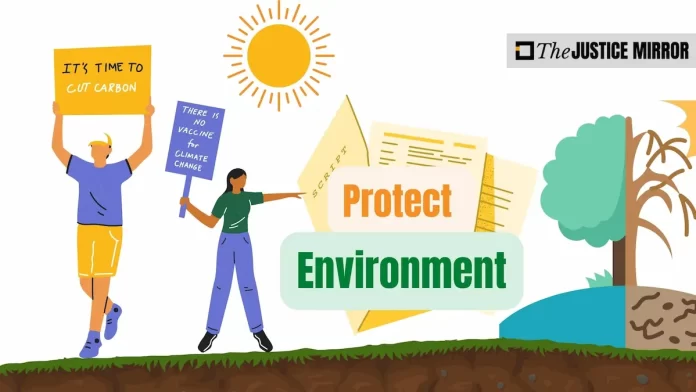The Global Environment Facility (GEF) is a significant international organization dedicated to addressing global environmental challenges.
Established in 1991, the GEF has played a pivotal role in financing and promoting initiatives that aim to safeguard the environment, protect biodiversity, combat climate change, and promote sustainable development.
In this article, we will delve into the mission, structure, and the impact of the Global Environment Facility, exploring its achievements and ongoing efforts to tackle the pressing environmental issues facing our planet.
Mission and Objectives
The GEF’s primary mission is to serve as a catalyst for positive environmental change on a global scale.
It is a partnership between 183 member countries, including developing and industrialized nations, providing financial and technical assistance to support projects and programs that address critical environmental issues. The organization has several key objectives:
- Biodiversity Conservation: GEF aims to preserve and protect the world’s biodiversity by supporting initiatives that safeguard natural habitats and endangered species.
- Climate Change Mitigation: The GEF contributes to efforts aimed at reducing greenhouse gas emissions and promoting the transition to a low-carbon, sustainable global economy.
- Land Degradation and Sustainable Land Management: The GEF supports projects that tackle issues like desertification, deforestation, and the sustainable management of natural resources.
- International Waters: GEF funds projects that promote cooperation and management of shared international waters, ensuring the health of oceans, rivers, and lakes.
- Chemicals and Waste Management: The GEF aids in the development of sustainable practices for chemical and waste management, reducing pollution and health risks.
Structure and Governance
The GEF operates as an independent financial organization under the umbrella of several other international institutions, including the World Bank, the United Nations Development Programme (UNDP), the United Nations Environment Programme (UNEP), and regional development banks. Its governance structure consists of:
- GEF Assembly: The highest decision-making body, where representatives from all member countries meet every four years to establish overall policy directions.
- GEF Council: Responsible for day-to-day operations, project approvals, and management, with 32 seats held by donors and 16 by recipients.
- GEF Secretariat: The administrative arm of the GEF, which manages project funding, policy implementation, and collaboration with partner agencies.
Funding Mechanisms
The GEF operates through several funding mechanisms, each tailored to address specific global environmental challenges:
- GEF Trust Fund: The core funding mechanism, which finances projects across the GEF’s focal areas, targeting the most pressing global environmental issues.
- Least Developed Countries Fund (LDCF): Designed to help the world’s poorest countries tackle climate change by supporting adaptation initiatives.
- Special Climate Change Fund (SCCF): Supports climate change-related projects and programs that are deemed particularly important and urgent.
- Adaptation Fund: An additional fund to support climate adaptation in developing countries, with a focus on those that are most vulnerable to climate change.
- Specific Funds and Programs: GEF has various targeted funds, such as the Small Grants Programme (SGP) and the Global Wildlife Program (GWP), which address specific environmental and biodiversity concerns.
Achievements and Impact
The GEF has made substantial contributions to addressing global environmental issues since its inception. Some notable achievements and impacts include:
- Biodiversity Conservation: The GEF has funded projects to protect critical ecosystems and endangered species, such as the Amazon Rainforest, the Great Barrier Reef, and the Siberian Crane.
- Climate Change Mitigation: The GEF has supported clean energy projects, reforestation efforts, and climate adaptation programs, contributing to the reduction of millions of tons of CO2 emissions.
- Land Degradation: Through sustainable land management projects, the GEF has played a pivotal role in reducing deforestation and soil erosion in vulnerable regions.
- International Waters: The GEF’s work in this area has helped to reduce pollution in shared water bodies and promote transboundary cooperation.
- Chemicals and Waste Management: The GEF has been instrumental in addressing hazardous waste issues and promoting safer chemical management practices in various countries.
- Sustainable Agriculture: The GEF has supported projects aimed at enhancing agricultural practices in developing nations, thus reducing the environmental impact of farming.
Current Challenges and Future Directions
While the GEF has achieved significant milestones, it continues to face several challenges in its mission to address global environmental issues:
- Resource Mobilization: Ensuring a sustainable and adequate flow of resources to tackle growing environmental challenges is a persistent challenge.
- Project Implementation: Coordinating and executing projects effectively, especially in remote or vulnerable regions, remains a challenge.
- Climate Change Financing: As climate change poses increasing threats, the GEF must secure additional funding to support adaptation and mitigation projects.
- Cross-Sectoral Cooperation: Encouraging collaboration among multiple stakeholders, governments, NGOs, and communities is essential for successful environmental initiatives.
In response to these challenges, the GEF has outlined a set of strategic priorities for its future direction, including:
- Strengthening Impact: Focusing on projects with the potential for high impact on the global environment.
- Enhancing Integration: Promoting integrated approaches that address multiple environmental issues simultaneously.
- Safeguarding Environmental Benefits: Ensuring that GEF-supported projects maintain environmental benefits over the long term.
- Increasing Collaboration: Enhancing partnerships with other international organizations and stakeholders to leverage additional resources and expertise.
Conclusion
The Global Environment Facility is a crucial player in the global effort to address environmental challenges.
It provides funding and technical support for a wide range of projects that aim to protect biodiversity, combat climate change, and promote sustainable development worldwide.
With its impressive track record and continued commitment to catalyzing environmental action, the GEF remains a vital force in safeguarding the planet’s future.
As the world faces ever-pressing environmental challenges, the work of the GEF becomes even more critical in the pursuit of a sustainable and resilient global environment.
